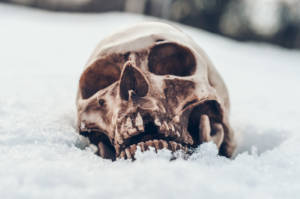
The humble coffee bean has a surprising religious history that weaves together many fascinating tails and origin stories.
Would you call your morning cup of coffee a mystical experience? In our quest to power up for the day, we probably don’t think about coffee’s origins. Yet this humble bean has a surprising religious history. It’s a fascinating and complex tale that began in Africa many centuries ago.
Coffee’s Ethiopian Origins
Coffee cultivation takes place in over 80 countries today, most of them located in tropical regions. One popular legend claims that an Ethiopian goat herder discovered the plant after noticing strange behavior out of his goats. After finding a green shrub decked with bright cherry-colored berries, he picked some of the fruit and brought it to a local monastery. The caffeine enabled the monks to stay awake, and the rest was history.
Except that it wasn’t really history.
Journalist Livia Gershon explains that the coffee plant did first grow wild in Ethiopia. However, the local tribespeople discovered it first. Thanks to its energizing properties, the bean was used as a sacrament in communal ceremonies. Hunters also imbibed it to stay alert and stave off hunger while seeking their prey. It eventually made its way to other parts of Africa, where other cultures found more uses for it. Some brewed a drink from the vivid red berries, while others roasted them in fat or chewed them without any prep. The Haya people of Tanzania even traded the beans as currency.
Java and Midnight Meditations
Just in case you thought the Ethiopian goat herder would get all the credit, there are two other myths about coffee’s origins. The Spruce‘s Lindsey Goodwin mentions one story in which a Sufi mystic finds and chews the berries during his journey through Ethiopia. Another tale claims that an exiled sheik on the verge of starvation discovered the plant in the wild. When he tossed the berries into his campfire, he fell in love with their aroma but found them too hard to chew. After trying to soften them in water, he drank the liquid and felt invigorated.
It’s hard to separate truth from myth, but we do know that Yemenite Sufi Muslims consumed coffee to keep alert during nighttime chanting rituals. Coffee eventually spread throughout the rest of the Muslim world, fueling Yemen’s economy for over 250 years. Many people drank it to stay awake during late-night Ramadan festivities, and coffeehouses sprung up to fuel the demand. More legends propagated about the bean’s origins, with some crediting Muhammed or the archangel Gabriel for gifting it to humanity.
Coffee Comes to Europe and America
Coffee was widely consumed in the Muslim world by the 1500s. Around this time, Europeans began encountering the drink during their travels. Although they found it bitter due to its initial lack of sugar, they loved its energizing effects. The drink soon came to Europe, where it was both loved and considered controversial. Just as in the Middle East, coffeehouses popped up in major cities throughout the continent. They became cultural centers and community meeting places, much like taverns were during America’s colonial era.
One often-repeated legend claims that several clerics asked Pope Clement VII to ban coffee, insisting that it was “Satan’s brew.” Yet when the pope tried coffee for himself, he enjoyed it so much that he gave it his blessing. From there, coffee came to the Americas, where early colonialists embraced the brew. “Coffee makes a man more reasonable, better able to concentrate and hardworking,” comments Laura Turner in the Washington Post. “No wonder people might see it going hand in hand with the Protestant work ethic.”
All Hail the Mighty Bean
Canada ranks third in the world for coffee consumption. For many of us, this bold brew is a must-have that fuels our bodies and minds. Whether or not we thank the divine for our daily drink, it certainly holds a revered place in our modern lives.



